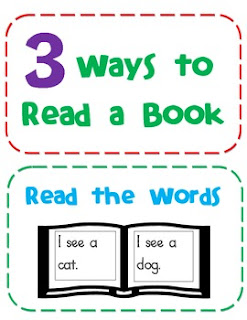UPDATE: I have added a quick song or chant to visually help kids remember how to use their hand to retell a story.
I have over half of my class reading on a level A now, as soon as the kids can one to one match and use pictures for clues I like to start them on books. A big part of reading is for a student to be able to comprehend what they have read. These simple A books do not have much of a story line so students need to look at what is going in the pictures along with the simple text that is read. We made retelling hands to help us remember how to retell a story. I have my students use these with their reading buddy to retell a story after they have read a book one of the three ways (read the words, read the pictures, retell a familiar story.) Having students make their own retelling hand helps them to buy into the task of retelling. I laminate their hands and have them get it out of their book boxes to use as a visual. It helps them to remember to stop and talk about the story with their partner when they have finished each book.
I have them trace their hand and then cut it out. I give them a green dot sticker for their thumb and a red dot sticker for their pinkie finger. Then they write the numbers 1, 2, and 3 on their three middle fingers. The green dot means go, they start by telling what the story was mainly about (character/setting). The one, two, and three are used to tell three things that happened in the book (major events or key details) and the red dot means stop, what happened at the very end of the book. I have found this very easy for kindergartners to use and use my hand as a visual when we retell a story whole group. I figure they each have a hand so no matter where they go they can use it to help them retell.
I also make a poster for the classroom that hangs on my reading process board in my room for students to refer to as a constant visual.







